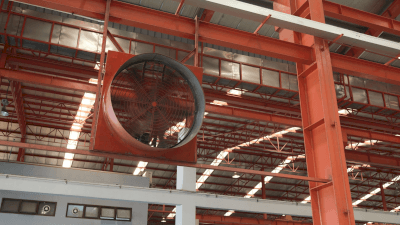What Is Industrial Ventilation?

Industrial ventilation are designed to exchange indoor air with outdoor air.
They are installed in houses and buildings for the purpose of hygiene control and the prevention of condensation. They take the form of ventilation fans, ducts, and other equipment.
Uses of Industrial Ventilation
Industrial ventilation are employed in various settings in modern society. In some cases, industrial ventilation is required by law. Examples of use include detached houses, public facilities like schools and hospitals, commercial facilities like department stores and theaters, and special buildings such as apartment buildings.
Ventilation helps maintain a constant oxygen concentration in rooms and is effective against sick building syndrome and deodorization.
Principles of Industrial Ventilation
Industrial ventilation is broadly categorized into two types: mechanical ventilation and natural ventilation.
1. Mechanical Ventilation
Mechanical ventilation utilizes a blower, such as a propeller fan or sirocco fan, to introduce outdoor air into a room and discharge indoor air. All-fresh type air conditioners also provide ventilation by air-conditioning outside air and sending it indoors. They are commonly used in high-rise buildings and large commercial facilities.
2. Natural Ventilation
Natural ventilation is achieved through the use of windows and sliding doors. It relies on natural airflow without mechanical equipment. This method is sometimes employed in gymnasiums.
Types of Industrial Ventilation
1. Type 1 Industrial Ventilation
Type 1 systems simultaneously exhaust and supply air. They maintain indoor air pressure relative to the outside by adjusting exhaust and intake volumes. However, they may have higher initial and maintenance costs and can potentially contribute to sick building syndrome due to microorganism growth in ducts.
2. Type 2 Industrial Ventilation
Type 2 systems supply outside air with a blower and exhaust through a separate port. They create positive pressure in rooms, preventing outside air pollution. This method is suitable for clean rooms, but may cause condensation within walls.
3. Type 3 Industrial Ventilation
Type 3 systems use natural air intake and mechanical exhaust, creating negative indoor pressure. They are often used in kitchens and restrooms to prevent odor spread and moisture accumulation.